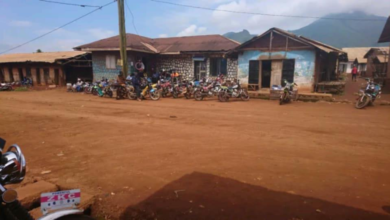Former gay detainee Shakiro releases voice notes of his prospective suitors

Stop deceiving your wives at home…they are many men who m*sturbate with my picture….there are many stars among, all these comedians you see around.
Shakiro July 22, 2022
This is one of the many declarations Loic Njeukam also known as Shakiro, made on his Live Facebook show on July 22, 2022.
He replayed anonymous voice notes where men declared their love for him and in some cases he cited their names.
“I love you so much baby, I want us to make love,” one person said in a voice note.
I will post their pictures and leave the contacts of your husbands and you all will see that they are also homosexuals.
Another Male voice was heard in an audio saying, “Shakiro I cannot deceive you, know that I love you.
Loic Njeukam says he is revealing these names and voices because they sit behind their keyboards and insult him but flood his inbox with sex requests.
“There are many stars and Facebook skit makers who are gay and have been flooding my inbox…Have you seen what your husbands send to me? Have you seen? This is his face.”( showing a man who sent him his private part)
He continued, ” You see men like that who get married to you but they love men and you will never Know. I will release all your names. When I was arrested and called them for help they never came. They ignored by calls while some dropped my call when they heard my voice,”
“Artists like Happi Effoulan, Cabrel Nanjip, Robinson Pifou, Tick Dengue, Ma Jackie, Delan Comedie, Dexter at Canal 2 International, they are all gay”, Shakiro revealed.
He declared that he will not stop promoting LGBT in Cameroon.
“I am the Pope of LGBT in Cameroon. I am hoping that by 2024 they will decriminalize homosexually in Cameroon”
In February 2021, Loic Njeukam and another gay, Patricia were arrested and locked up at the New Bell prison in Cameroon’s economic capital, Douala.
They were later released in July same year after a fine.
Cameroon revised the penal code of 1972 criminalize homosexuality.
It is not yet certain if Shakiro and his friend, Mouthe Roland also known as Patricia are in Cameroon.




